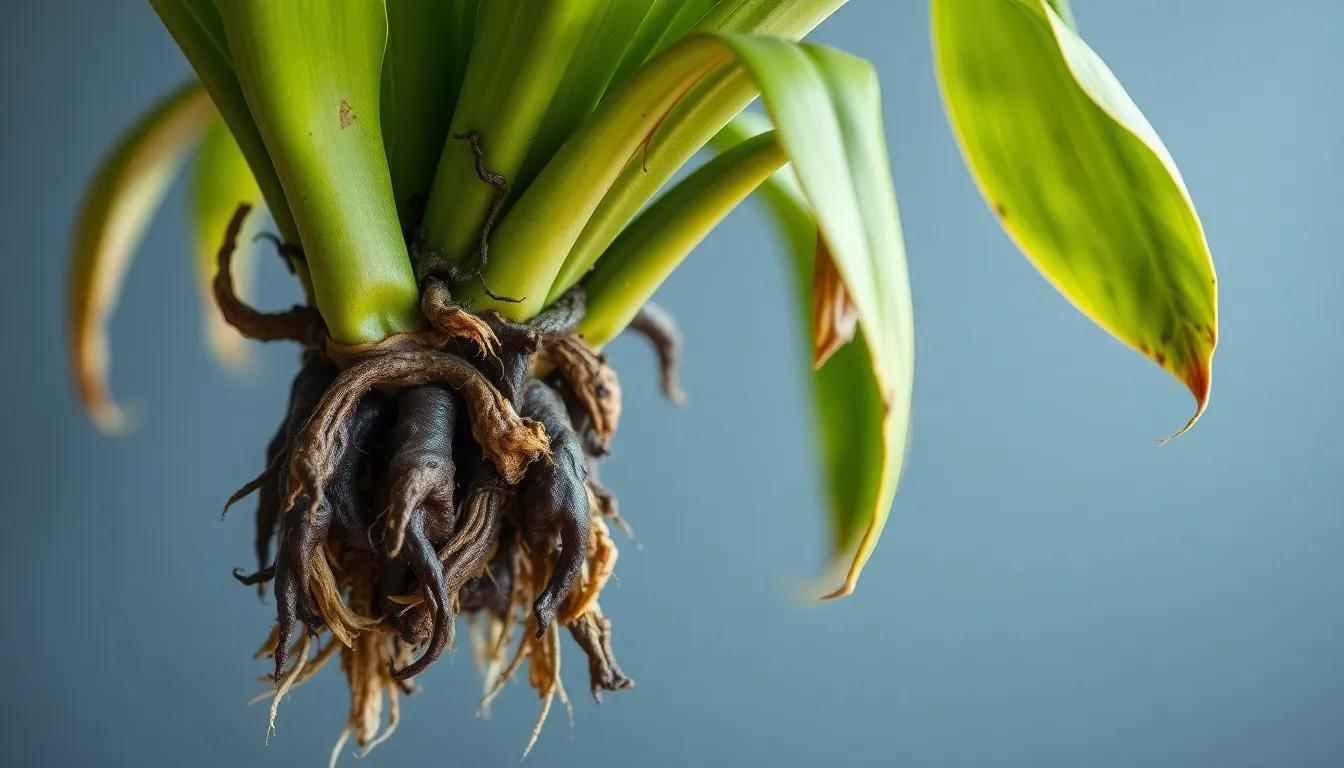
Overwatered Yucca Plant Diseases Pictures: Spot the Signs and Save Your Plant
Yucca plants are the resilient champions of the plant world, thriving in tough conditions. But when they get too much love—specifically in the form of water—they can fall victim to a host of diseases that would make even the toughest gardener cringe. If your yucca’s looking more like a sad, soggy sponge than a proud desert warrior, it might be time to investigate the symptoms of overwatering.
Overwatered Yucca Plant Diseases Pictures
Overwatering significantly affects yucca plants, leading to various health issues. Recognizing the symptoms early can prevent severe damage and promote recovery.
Symptoms of Overwatered Yucca Plants
Leaf yellowing occurs when roots become stressed due to excess moisture. Wilting might also happen, even though soil is wet, as roots struggle to absorb oxygen. Blackened or mushy roots indicate serious rot, which can be fatal. Fungal growth on the plant’s surface suggests high humidity and waterlogged conditions. Finally, lower leaves may drop prematurely as a sign of distress.
Causes of Overwatering
Overwatering frequently stems from poor drainage in pots, which traps water and prevents proper airflow to roots. Using soil that retains too much moisture can exacerbate the problem. Overly frequent watering, even when conditions seem dry, contributes to the issue. Seasonal changes in weather affect watering needs, making it essential to adjust accordingly. Insufficient sunlight exposure can also impact a plant’s water uptake, leading to overwatering symptoms.
Common Diseases Caused by Overwatering

Overwatering can lead to several diseases affecting yucca plants. Identifying these issues early promotes effective treatment.
Root Rot
Root rot is a severe condition resulting from consistently soggy soil around the roots. Dark, mushy roots indicate this disease, leading to diminished nutrient absorption. Symptoms include wilting plants, yellowing leaves, and an overall unhealthy appearance. Addressing root rot requires immediate intervention, such as repotting in well-draining soil and reducing watering frequency. Monitoring the moisture levels in soil can prevent recurrence.
Leaf Spot
Leaf spot manifests as dark, irregular spots on the yucca’s foliage, often a result of fungal growth. Overly moist conditions encourage spore development, causing infections that may spread quickly. Affected leaves might display yellowing edges, eventually leading to leaf drop. To manage leaf spot, ensure proper air circulation and remove any infected leaves promptly. Using a fungicide can also help control the spread of infection.
Fungal Infections
Fungal infections flourish in overly wet conditions, presenting a threat to yucca plants. White or gray mold may appear on plant surfaces, particularly under high humidity. Symptoms include leaf wilting, browning, or blackening, indicating decay. Encouraging proper drainage and avoiding watering leaves directly minimizes fungal growth. Additionally, applying fungicides as a preventative can significantly reduce the risk of infection, ensuring a healthier yucca plant.
Identifying Diseases Through Pictures
Visual identification of diseases in yucca plants plays a crucial role in timely intervention. Observing images helps distinguish between healthy and overwatered plants, providing clear indicators of potential issues.
Healthy vs. Overwatered Yucca Plant Images
Healthy yucca plants exhibit vibrant green leaves that stand upright and firm. In contrast, overwatered plants show signs of distress. Leaf yellowing and wilting, even in wet soil, serve as red flags for overwatering. Pictures capturing these variations reveal crucial differences in leaf texture and color, assisting in diagnosis. Additionally, the presence of blackened or mushy roots visually confirms root rot, prompting immediate action.
Disease Progression Images
Images illustrating disease progression highlight the rapid impact of overwatering. Root rot starts with dark, mushy roots but quickly escalates to wilting and yellowing leaves. Leaf spot disease appears as dark irregular patches on foliage, indicating underlying fungal issues. Pictures documenting these changes provide valuable insights into disease severity, aiding in effective treatment strategies. Detecting these stages early allows for proactive measures, such as repotting in well-draining soil or applying fungicides.
Treatment and Prevention
Effective treatment and prevention strategies ensure the health of yucca plants affected by overwatering.
Proper Watering Techniques
Understanding proper watering techniques is essential for preventing overwatering. Watering once every 1 to 2 weeks suffices, depending on conditions. Checking soil moisture with a finger before watering helps avoid excess moisture. Considering the time of year can help adjust watering frequency; during hot weather, plants may need more water. Ensuring pots have drainage holes promotes healthy root systems. Observing weather patterns allows for adjustments; during rainy periods, reduce watering significantly. Following these techniques can help maintain optimal moisture levels and prevent diseases.
Soil and Drainage Solutions
Choosing the right soil mixture plays a vital role in preventing overwatering issues. Well-draining soil, such as a cactus or succulent mix, allows excess moisture to escape easily. Adding perlite or sand improves drainage properties, creating a suitable environment for yucca plants. Using pots with sufficient drainage holes is critical; this prevents water from pooling at the bottom. Monitoring the pot’s moisture level ensures timely actions if overwatering occurs. Regularly checking for root health can prevent potential diseases linked to damp conditions. Implementing these soil and drainage solutions promotes overall plant health and vigor.
Conclusion
Addressing the challenges of overwatering is essential for maintaining the health of yucca plants. Recognizing symptoms early can prevent severe damage and promote recovery. By utilizing visual cues and understanding the common diseases associated with excess moisture, plant owners can take proactive steps to ensure their yuccas thrive.
Implementing effective treatment and prevention strategies will help create an optimal environment for these resilient plants. With proper watering techniques and well-draining soil, yucca plants can flourish. Ultimately, the right care can transform a struggling yucca back into a vibrant addition to any space.



